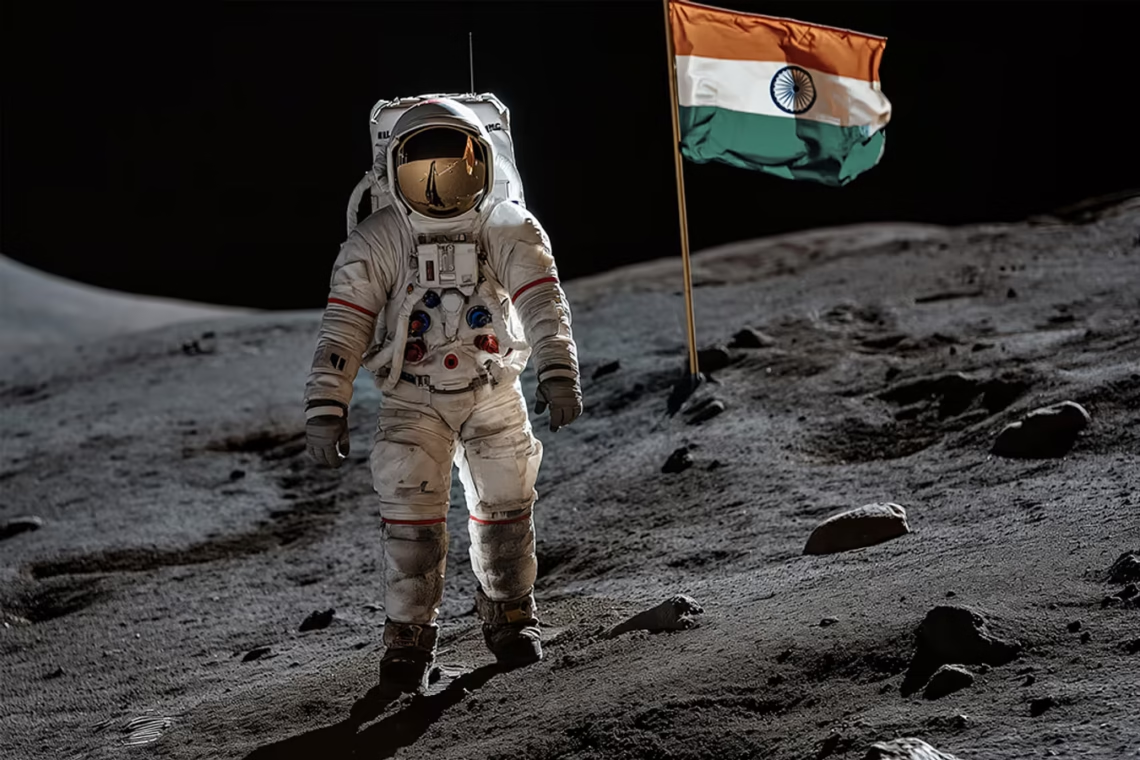As a kid in rural Pakistan, I’d lie under a blanket of stars, clutching my uncle’s telescope, dreaming of astronauts and distant worlds. Those nights fueled my love for space exploration, a saga of human ingenuity that’s reshaped our understanding of the cosmos. From the first satellite to lunar landings and interstellar voyages, space missions have defined our past and future. This guide dives into the 16 most pivotal missions, blending 2025 insights with stories of triumph and tragedy. Whether you’re a space nerd or just curious, let’s journey through the missions that changed everything.
The Dawn of the Space Age
The Space Age began with a beep heard round the world, sparking a race to the stars. These early missions laid the foundation for everything from moonwalks to Mars rovers. They’re the roots of our cosmic tree.
Sputnik 1: The First Satellite
On October 4, 1957, the Soviet Union launched Sputnik 1, a 23-inch sphere that orbited Earth 1,440 times. Its radio signals stunned the world, kicking off the space race. It burned up on reentry in 1958, but its legacy endures.
Vostok 1: Humanity’s First Orbit
Yuri Gagarin became the first human in space on April 12, 1961, orbiting Earth in 108 minutes aboard Vostok 1. His safe return ignited global awe and Soviet pride. It was my first space hero moment, imagining his view of Earth.
Explorer 1: America’s Answer
Launched January 31, 1958, Explorer 1 was the U.S.’s first satellite, discovering the Van Allen radiation belts. It orbited until 1970, proving America could compete. This mission was a wake-up call for NASA’s ambitions.
Pioneering Planetary Exploration
Venturing beyond Earth’s orbit, these missions unveiled alien worlds. I remember sketching Mars’s craters as a teen, inspired by grainy images from early probes. These journeys reshaped planetary science.
Mariner 2: First Venus Flyby
Mariner 2, launched in 1962, was the first spacecraft to study Venus up close, revealing no magnetic field. It survived scorching conditions to send back data. This mission showed we could reach other planets.
Mariner 4: First Mars Photos
On July 14, 1965, Mariner 4 sent the first close-up images of Mars, capturing 21 blurry photos of craters. It dashed hopes of Martian canals but fueled curiosity. Those images were my first glimpse of the Red Planet.
Venera 7: Landing on Venus
The Soviet Venera 7 landed on Venus in 1970, surviving its hellish surface for an hour. It sent back critical data on temperature and pressure. This was humanity’s first touchdown on another planet.
The Moon Landings and Beyond
The Apollo era was humanity’s boldest leap. Watching grainy Apollo 11 footage with my family felt like touching the stars. These missions proved we could walk on other worlds.
Apollo 8: First Lunar Orbit
In December 1968, Apollo 8’s crew—Frank Borman, James Lovell, and William Anders—orbited the Moon, capturing the iconic Earthrise photo. Their Christmas Eve broadcast united a turbulent world. It was a moment of hope.
Apollo 11: First Moon Landing
On July 20, 1969, Neil Armstrong and Buzz Aldrin walked on the Moon, with Michael Collins orbiting above. Armstrong’s “one small step” echoed globally. I still get chills thinking of humanity’s giant leap.
Apollo 13: A “Successful Failure”
In 1970, an oxygen tank explosion crippled Apollo 13, forcing its crew to abort their lunar landing. Their ingenuity and NASA’s teamwork brought them home safely. It’s a tale of human resilience I’ve shared with friends.
Exploring the Outer Solar System
These missions ventured to gas giants and beyond, revealing cosmic wonders. I once stayed up late tracking Voyager’s path, dreaming of distant planets. They’re humanity’s farthest reach.
Pioneer 10: First to Jupiter
Launched in 1972, Pioneer 10 was the first to cross the asteroid belt and study Jupiter in 1973. It sent back stunning images of the Great Red Spot. Its journey past Pluto marked a new frontier.
Voyager 2: Grand Tour of Planets
Voyager 2, launched in 1977, is the only spacecraft to visit Uranus and Neptune, discovering new moons and rings. Still active in 2025, it’s in interstellar space. Its Golden Record carries Earth’s story to the stars.
Galileo: Jupiter’s Deep Dive
Galileo, launched in 1989, orbited Jupiter for eight years, finding Europa’s subsurface ocean. Its data sparked life-hunting missions. I marveled at its images, dreaming of alien seas.
Orbiting Observatories and Cosmic Insights
Space telescopes opened new windows to the universe. As a student, I pored over Hubble’s images, feeling the cosmos’s vastness. These missions redefined our place in it.
Hubble Space Telescope: Cosmic Eye
Launched in 1990, Hubble has delivered over 1.5 million observations, from black holes to distant galaxies. Its 2025 data still shapes astronomy. It’s the telescope that made the universe feel closer.
James Webb Space Telescope: Seeing the Past
Since 2021, JWST has peered 13.5 billion years back, spotting ancient galaxies like GLASS-z13. Its infrared vision unveils star formation. I’m still awed by its cosmic time machine.
Mars and the Search for Life
Mars missions have hunted for signs of life and paved the way for humans. Watching Curiosity’s landing livestream felt like sci-fi come true. These rovers are our Martian pioneers.
Viking 1: First Mars Landing
Viking 1 landed on Mars in 1976, sending the first color photos of its surface. It ran for six years, studying soil and weather. Its images fueled my teenage Mars obsession.
Perseverance and Ingenuity: Mars Innovators
Launched in 2020, Perseverance explores Jezero Crater, seeking ancient life signs, while Ingenuity, the first Mars helicopter, flew in 2021. Their 2025 data drives future colony plans. It’s Mars exploration on steroids.
Table: 16 Most Important Space Missions
|
Mission |
Year |
Achievement |
Impact |
|---|---|---|---|
|
Sputnik 1 |
1957 |
First satellite |
Started Space Age |
|
Vostok 1 |
1961 |
First human in space |
Proved human spaceflight |
|
Explorer 1 |
1958 |
First U.S. satellite |
Found Van Allen belts |
|
Mariner 2 |
1962 |
First Venus flyby |
Studied Venus’s environment |
|
Mariner 4 |
1965 |
First Mars photos |
Revealed Martian craters |
|
Venera 7 |
1970 |
First Venus landing |
Sent Venus data |
|
Apollo 8 |
1968 |
First lunar orbit |
Captured Earthrise photo |
|
Apollo 11 |
1969 |
First Moon landing |
Humans walked on Moon |
|
Apollo 13 |
1970 |
Safe return after failure |
Showed human ingenuity |
|
Pioneer 10 |
1972 |
First Jupiter flyby |
Crossed asteroid belt |
|
Voyager 2 |
1977 |
Visited Uranus, Neptune |
Interstellar data |
|
Galileo |
1989 |
Orbited Jupiter |
Found Europa’s ocean |
|
Hubble |
1990 |
Orbiting telescope |
Transformed astronomy |
|
JWST |
2021 |
Infrared space telescope |
Saw ancient galaxies |
|
Viking 1 |
1976 |
First Mars landing |
Sent Martian surface data |
|
Perseverance |
2020 |
Mars rover, helicopter flight |
Seeks life, aids colony plans |
-
Pros of These Missions: Expanded knowledge, inspired generations.
-
Cons: High costs, risks to human life.
Comparing Crewed vs. Robotic Missions: Crewed missions (Apollo) inspire but risk lives; robotic missions (Voyager) are safer, longer-lasting.
The Impact of These Missions
These 16 missions didn’t just explore—they reshaped society. I recall discussing Apollo 11’s cultural impact in college, marveling at its global reach. Their legacy spans tech, science, and dreams.
Technological Spinoffs
Missions like Apollo birthed GPS, MRI scanners, and solar panels. Viking’s tech improved weather forecasting. In 2025, Perseverance’s tools drive robotics innovation for Earth industries.
Scientific Breakthroughs
Hubble confirmed the universe’s expansion; Voyager revealed Neptune’s winds. These discoveries rewrote textbooks. I still use JWST’s exoplanet data in amateur astronomy chats.
Cultural and Political Shifts
Sputnik sparked the space race; Apollo 11 united humanity. My uncle’s stories of watching Gagarin’s flight on radio highlight their emotional pull. These missions shaped global pride and rivalry.
Challenges and Risks Faced
Space is unforgiving—costs, failures, and losses mark its history. I’ve debated friends on whether Apollo’s price was worth it. These missions overcame immense hurdles.
Financial Costs
Apollo cost $150 billion (2025 dollars); JWST hit $10 billion. Critics argue this could fund Earth’s needs, but spinoffs justify investment. Balancing budgets remains a challenge.
Technical Failures
Venera 7 fried on Venus; Apollo 13 nearly ended in tragedy. Each failure taught resilience. In 2025, SpaceX’s Starship tests echo this trial-and-error spirit.
Human Risks
Apollo 13’s crew faced death; cosmonauts died on Soyuz 11. These losses haunt me when I think of future Mars missions. Safety remains paramount.
Pros and Cons of Space Missions:
-
Pros: Drive innovation, expand knowledge.
-
Cons: Risky, expensive, ethical debates.
How to Engage with Space History
You don’t need a rocket to explore these missions. My first telescope night felt like joining NASA’s legacy. Here’s how you can dive in during 2025.
Best Tools for Space Enthusiasts
A Celestron NexStar 6SE ($900) reveals Jupiter’s bands; SkySafari ($5) maps 2025 skies. Binoculars (10×50, $100) are a budget-friendly start for stargazing.
Where to Learn More
Visit NASA’s archives at nasa.gov or the Smithsonian Air and Space Museum. Join Zooniverse to analyze Hubble data. Planetariums host Apollo exhibits.
Events and Resources in 2025
Watch Apollo 11 documentaries on Netflix or track Artemis II’s lunar orbit prep on X. Read “Rocket Men” by Robert Kurson for Apollo 8’s story. Local astronomy clubs host star parties.
Comparison: Online vs. In-Person Learning
-
Online: Free, accessible; lacks immersion.
-
In-Person: Hands-on, social; travel required.
Transactional Tip: Buy Orion StarBlast 4.5 ($200) at telescope.com for backyard viewing.
External Link: NASA’s mission archives at nasa.gov/missions.
Internal Link: See our mission table above.
2025 and the Future of Space Missions
These 16 missions set the stage for today’s ambitions. Following Artemis II’s 2025 lunar orbit feels like Apollo’s revival. The past fuels the future.
Artemis II: Lunar Return
Artemis II will orbit the Moon in 2025, testing tech for 2028 landings. It’s a nod to Apollo 8’s legacy. International crews make it a global endeavor.
Private Ventures
SpaceX’s Starship, tested in 2025, aims for Mars by 2033. Blue Origin’s lunar landers support Artemis. Private firms echo Falcon 9’s 2015 landing milestone.
Life Search Continues
Europa Clipper, prepping for 2030, builds on Galileo’s ocean discovery. JWST’s 2025 exoplanet scans hunt for biosignatures. The quest for life drives forward.
People Also Ask: Space Mission Questions
From Google searches:
-
What was the first space mission? Sputnik 1, launched in 1957, was the first satellite.
-
Why was Apollo 11 important? It landed humans on the Moon in 1969, a historic first.
-
What’s the farthest space mission? Voyager 2, now in interstellar space, is humanity’s farthest probe.
-
Did Apollo 13 fail? It aborted its lunar landing but safely returned, a “successful failure.”
-
What’s the most recent major mission? JWST, operational since 2021, sees the early universe.
FAQ: Your Space Mission Queries Answered
What made Sputnik 1 so significant?
It launched the Space Age, proving satellites could orbit Earth and sparking the space race.
Which mission first landed on another planet?
Venera 7 landed on Venus in 1970, sending back data despite extreme conditions.
Where can I learn about Apollo missions?
Check NASA’s site, the Smithsonian, or “Apollo 11” on streaming platforms.
Are there books on Voyager missions?
Yes, try “The Interstellar Age” by Jim Bell at amazon.com.
Will we return to the Moon soon?
Artemis II orbits in 2025; landings are planned for 2028.





